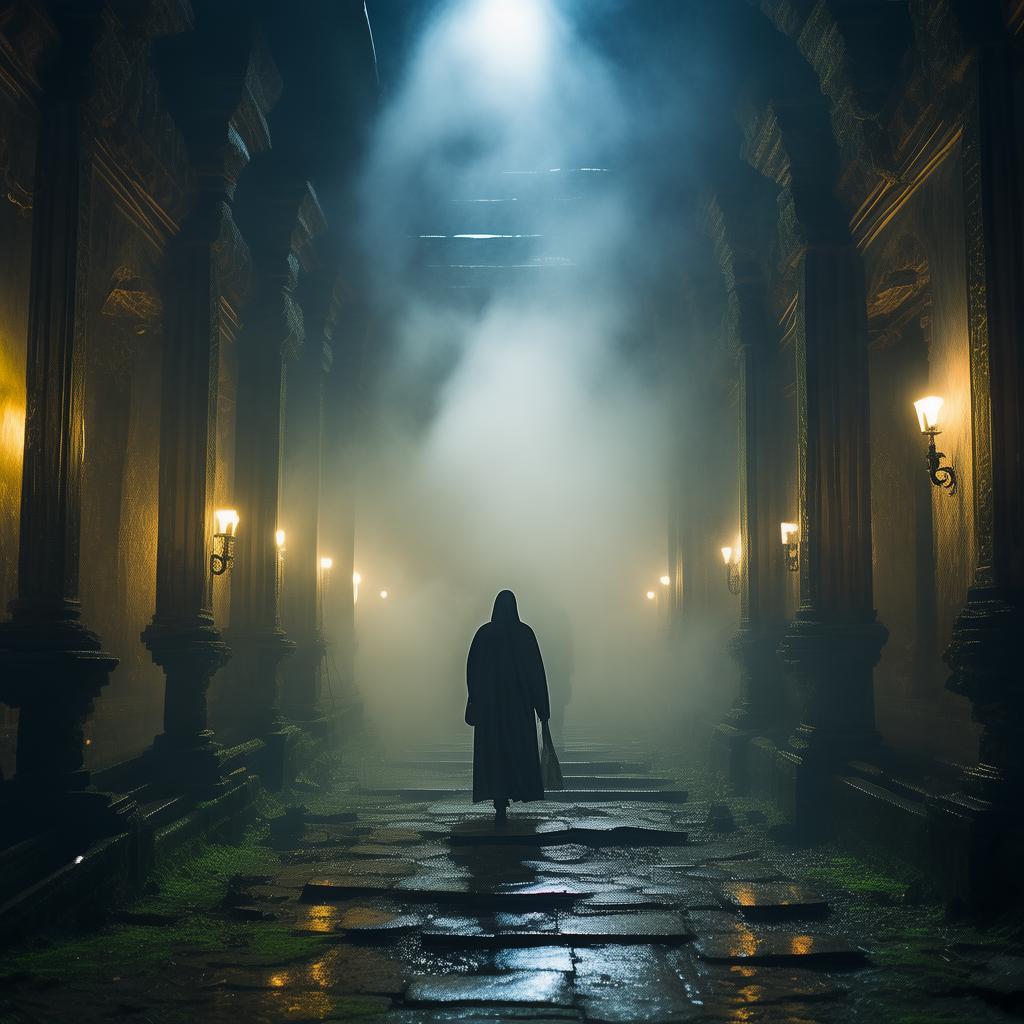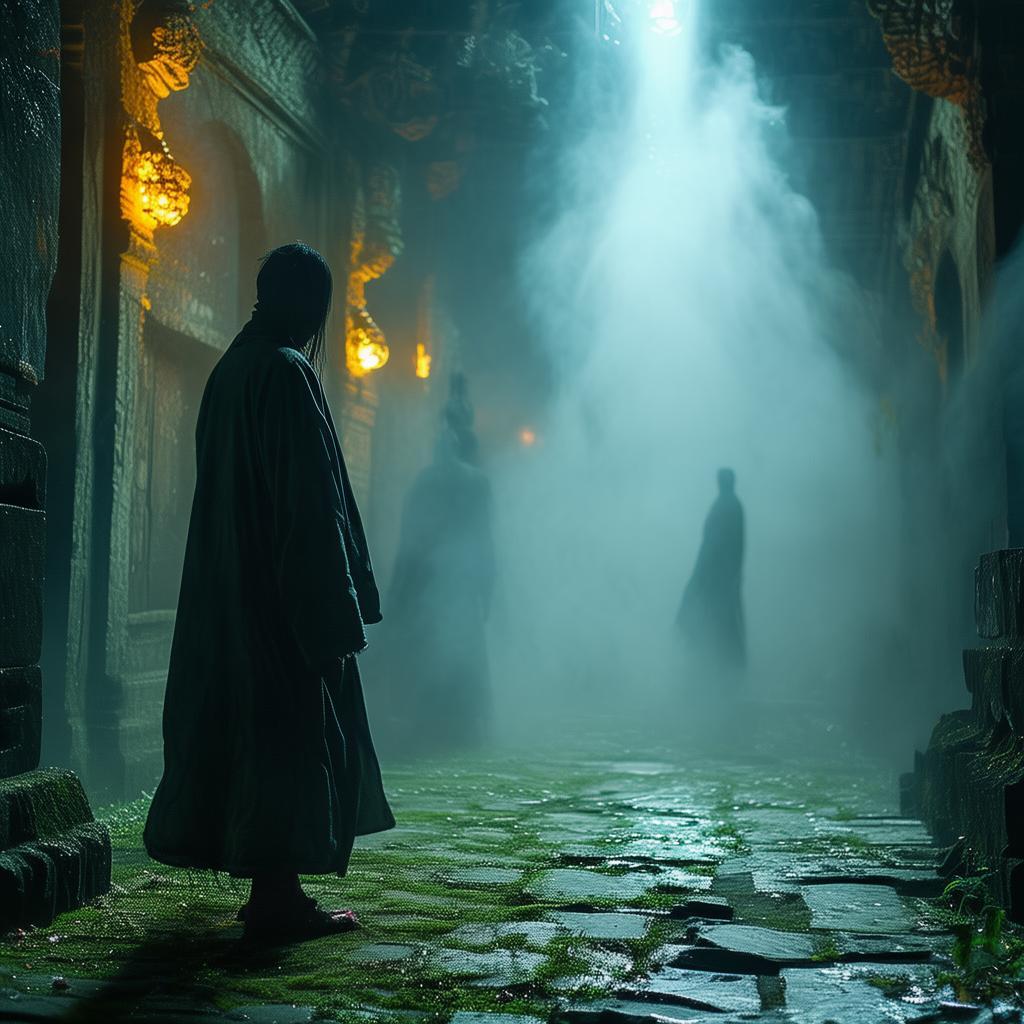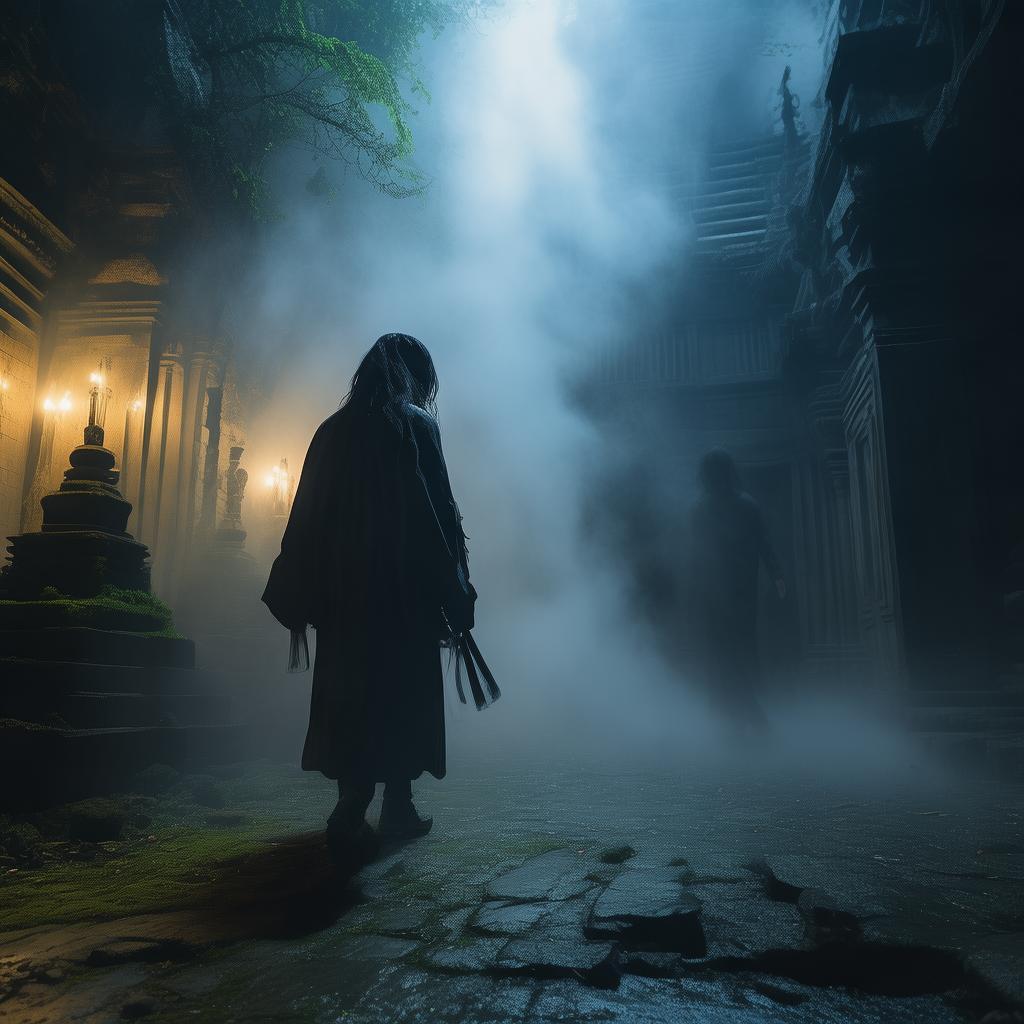The Silent Witness: The Haunted Heirloom's Sinister Secret
In the heart of a small, quaint English village, nestled within the walls of an ancient manor, there hung a painting that whispered tales of a haunting legacy. The painting was a portrait of a woman, her eyes piercing through the canvas, as if watching the very soul of the beholder. It was said to be the work of a forgotten artist, a masterpiece of its time, yet it bore no signature. This painting, known as the Haunted Heirloom, had been passed down through generations, each member of the family haunted by its presence.
Eliza, a young woman of 27, had always been intrigued by the legend of her ancestors. She had heard whispers of the painting's ghostly presence, tales of cold drafts in rooms where the portrait hung, and of the occasional sound of a woman's soft laughter. Eliza's grandmother, who had been the last to possess the heirloom, had passed away unexpectedly, leaving behind the painting and a sealed letter.
Curiosity piqued, Eliza opened the letter. It was addressed to her, and inside, she found a cryptic message that spoke of a dark secret hidden within the painting. "The woman in the portrait is not who she appears," it read. "She holds a curse, and only through the truth can you break it."
With determination, Eliza began her quest to uncover the truth. She visited the village historian, an elderly man with a twinkle in his eye and a penchant for storytelling. "The painting was said to be the last work of an artist who fell victim to his own creation," he began. "He was obsessed with capturing the essence of the human soul, and in doing so, he cursed his masterpiece."
Eliza's search led her to a hidden room within the manor, the door to which had been sealed shut for decades. Inside, she discovered a trove of old letters and diaries belonging to the artist. As she pored over the documents, she learned that the artist, a man named Jonathan, had been obsessed with capturing the woman in the painting's soul. He had been driven by an unquenchable thirst for knowledge, willing to sacrifice anything, including his own sanity, to achieve his goal.
One letter in particular caught her attention. It was written by Jonathan to his wife, revealing his plan to use the painting as a vessel for the woman's spirit. "I will bind her soul to the canvas, and then she will be mine forever," he had written. Eliza realized that the painting was not just a portrait but a prison for a trapped soul.
Determined to free the spirit, Eliza sought the help of a local psychic, who claimed to have the ability to communicate with the spirit world. The psychic, a woman named Clara, agreed to perform a ritual to release the trapped spirit. As Clara chanted ancient incantations, the room grew colder, and a faint glow emanated from the painting. Suddenly, the portrait began to flicker, and a figure emerged, the woman's eyes wide with terror.
The spirit, now free, revealed her name was Isabella. She had been Jonathan's muse, a woman he had loved deeply but was forced to sacrifice for his obsession. "I was trapped by my own beauty, and I cursed you all," Isabella said, her voice echoing through the room. "Only by proving your worth can you break the curse."
Eliza knew that to break the curse, she had to prove her worth. She began to piece together the puzzle of Jonathan's life, uncovering secrets and lies that had been hidden for decades. She discovered that Jonathan had not been alone in his obsession; his wife, Isabella, had also been in on the plan, driven by her own desires for power and immortality.
Eliza's journey took her to the heart of the village, where she uncovered a web of deceit and betrayal. She discovered that her own ancestor, the last to possess the painting, had been complicit in Jonathan's schemes, using the painting as a tool to control the family. With each new revelation, Eliza felt the weight of the curse pressing down on her, the spirit of Isabella seeking justice.
Finally, Eliza confronted the truth about her family's past. She learned that the curse had been a result of her ancestor's greed and ambition. The painting was a symbol of their dark desires, and it was up to Eliza to break the cycle of sin.

On the eve of the full moon, Eliza stood before the painting, her heart pounding with fear and resolve. She repeated the words of the psychic, the incantations that would break the curse. As the words left her lips, the painting began to glow brighter, and Isabella's spirit materialized once more.
"I forgive you," Isabella said, her voice soft and sorrowful. "Let me go, and you will be free."
With a final incantation, Eliza released Isabella's spirit, and the painting returned to its original state. The curse was broken, and with it, the haunting that had plagued her family for generations. The manor grew warm once more, and the cold drafts ceased.
Eliza felt a weight lift from her shoulders, a sense of peace she had never known. She knew that the journey had not been easy, but it had been worth it. She had faced her family's dark past and had emerged stronger, ready to embrace her future.
The Haunted Heirloom, once a symbol of a curse, now held no power over her. It was simply a painting, a beautiful work of art that told a story of love, obsession, and redemption. Eliza hung the painting in her own home, a reminder of the journey she had taken and the lessons she had learned.
In the end, the painting had been the silent witness to a family's past, and Eliza had been the one to bring peace to both the living and the dead.
✨ Original Statement ✨
All articles published on this website (including but not limited to text, images, videos, and other content) are original or authorized for reposting and are protected by relevant laws. Without the explicit written permission of this website, no individual or organization may copy, modify, repost, or use the content for commercial purposes.
If you need to quote or cooperate, please contact this site for authorization. We reserve the right to pursue legal responsibility for any unauthorized use.
Hereby declared.









